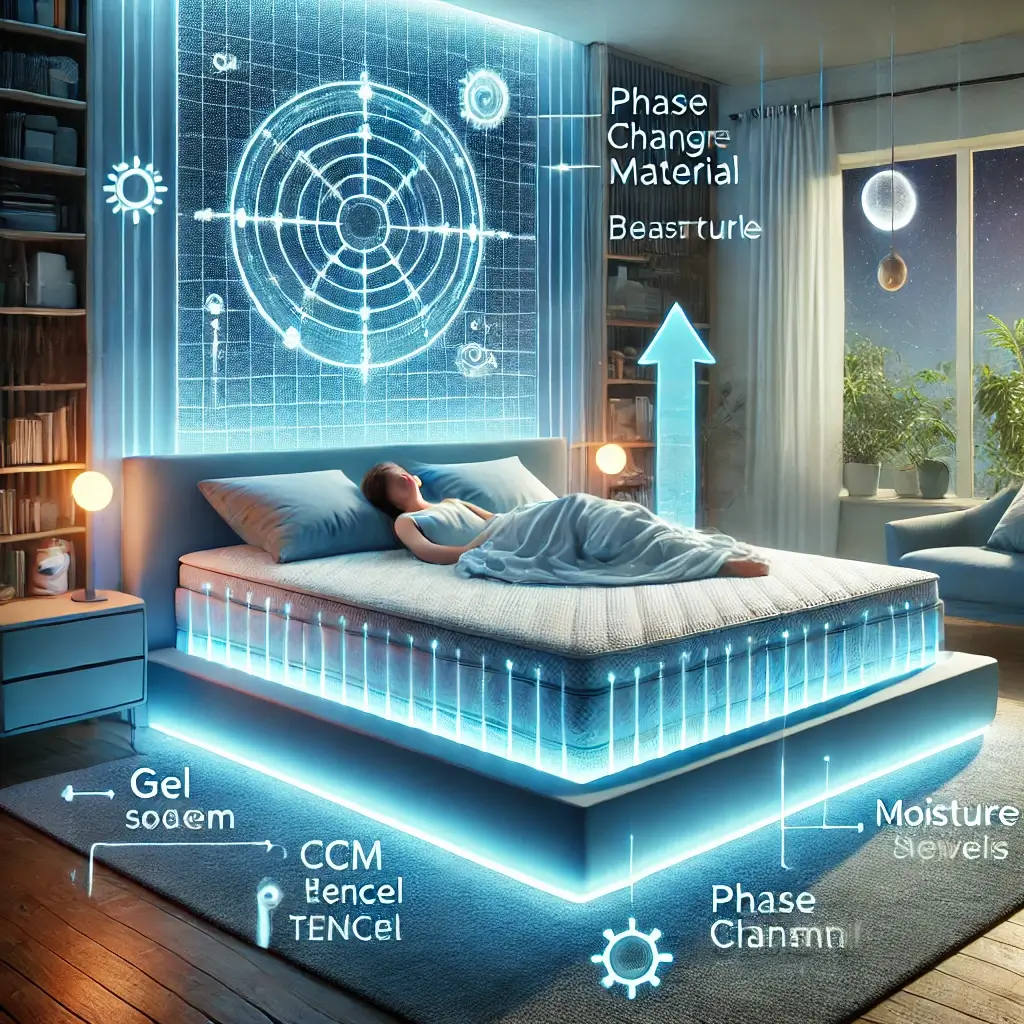The Reality of Nighttime Overheating
For many, the thought of bedtime conjures images of relaxation and comfort. However, for hot sleepers, the reality is far less idyllic. Nighttime overheating is a common problem, affecting roughly 20% of adults, as reported by the National Sleep Foundation. This condition often leads to restless nights filled with tossing and turning, and waking up drenched in sweat. Over time, this can significantly impact sleep quality, mood, productivity, and overall health.
Advancements in Sleep Technology
Fortunately, the growing awareness of temperature’s role in sleep has led to advancements in sleep technology. Among these innovations are cooling mattresses, designed specifically to address overheating and promote a restful night’s sleep. Yet, with so many products on the market, it can be challenging to determine which features are genuinely effective.
Understanding Cooling Mattress Science
This article explores the science behind cooling mattresses, highlighting proven technologies and materials that make a real difference for hot sleepers. By understanding these innovations, you can make informed decisions to improve your sleep experience.
Revolutionary Temperature Control with PCMs
Phase Change Materials are engineered to stabilize temperatures by absorbing and releasing heat as needed. These materials respond to body temperature fluctuations, maintaining a consistently cool surface. A 2019 study published in the International Journal of Clothing Science and Technology demonstrated that PCM-infused fabrics significantly reduced skin temperature and sweating during sleep (Fang et al., 2019). In mattresses, PCMs are often used in covers or comfort layers to help hot sleepers stay cool throughout the night.
Balancing Cooling and Support with Gel Memory Foam
Traditional memory foam’s dense structure is notorious for trapping heat, making it unsuitable for hot sleepers. Gel-infused memory foam mitigates this issue by incorporating gel particles that disperse heat away from the body. Research in Sleep Health (2018) found that gel memory foam not only improved temperature control but also enhanced pressure relief, making it a dual-purpose solution for comfort and cooling (Lee et al., 2018). However, individuals who prefer less contouring may find this material less suitable.
Advanced Airflow Systems
Hybrid mattresses combine foam layers with coil systems designed to promote airflow. Unlike traditional innerspring designs, these advanced coils reduce heat buildup by improving ventilation within the mattress. A 2020 study in Building and Environment highlighted the role of airflow in passive cooling strategies, demonstrating that increased ventilation within bedding materials significantly improves thermal comfort (Smith et al., 2020). Hot sleepers looking for a breathable option may benefit from hybrid mattresses with these features.
Advanced Fabric Technology
The outer cover of a mattress plays a crucial role in heat management. Materials like Tencel and other advanced fabrics excel in moisture-wicking and breathability, providing a cooler and drier sleeping surface. A study published in the Textile Research Journal (2017) found that Tencel outperformed cotton in moisture management, making it an excellent choice for hot sleepers (Jones et al., 2017). Many cooling mattresses incorporate these fabrics in their construction to enhance the overall sleep experience.
Essential Considerations for Hot Sleepers
While the technologies above can greatly improve thermal comfort, several other factors influence how effective a cooling mattress will be. These include: Sleeping Position: Side sleepers may require softer mattresses, while back sleepers benefit from firmer support. Mattress Firmness: Firmer mattresses often allow for better airflow, while softer ones may conform more closely to the body, trapping heat. Room Environment: Temperature control in the bedroom—through fans, air conditioning, or breathable bedding—can complement the cooling effects of a mattress.
Finding Your Perfect Cooling Solution
For hot sleepers, finding relief from nighttime overheating is essential for achieving restorative sleep. Cooling mattresses offer a scientifically-backed solution, incorporating features such as PCMs, gel memory foam, breathable coils, and moisture-wicking fabrics. These innovations are supported by research and represent a significant advancement in sleep technology. When selecting a cooling mattress, it’s essential to consider not only the materials and features but also your personal preferences, sleeping style, and budget. Testing mattresses in-store or exploring generous trial periods can help ensure you find the perfect fit. With the right mattress, you can transform your sleep experience, leaving behind the discomfort of overheating and embracing nights of refreshing, uninterrupted rest.
Research Sources
Fang, X., et al. (2019). The effect of phase change materials in sleepwear on thermoregulation during sleep. International Journal of Clothing Science and Technology, 31(4), 501-515.
Lee, C.-H., et al. (2018). Mattress support and its effect on sleep quality and pressure distribution. Sleep Health, 4(2), 123-130.
Smith, J., et al. (2020). Passive cooling strategies in bedding for thermal comfort. Building and Environment, 180, 107050.
Jones, A., et al. (2017). Moisture-wicking properties of fabrics: A comparative study. Textile Research Journal, 87(11), 1414-1422.
